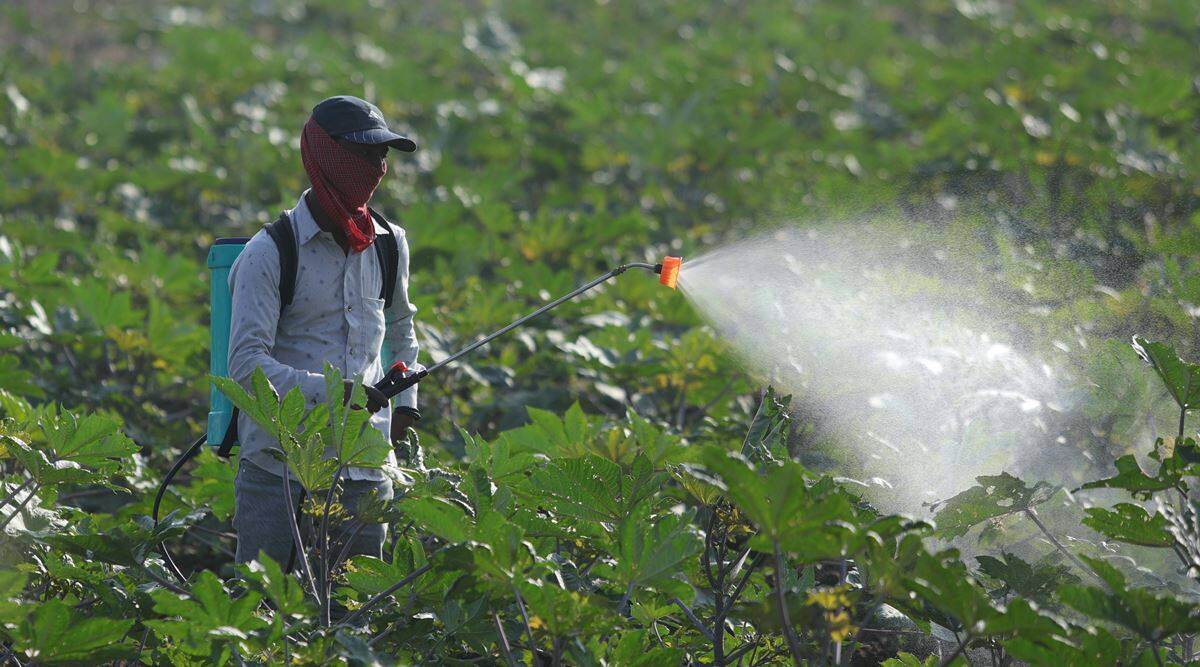 Since April, most companies have steeply raised the MRP of DAP from around Rs 24,000 to Rs 37,000-38,000 per tonne and done the same for other complexes as well.
Since April, most companies have steeply raised the MRP of DAP from around Rs 24,000 to Rs 37,000-38,000 per tonne and done the same for other complexes as well. THE CENTRE has urged the fertiliser industry to maintain retail prices of di-ammonium phosphate (DAP), muriate of potash (MOP) and other non-urea nutrients at “reasonable” levels, even as the cost of importing these products and their raw materials has surged over the past few months.
Companies have been requested “to keep the reasonableness of their profits and not increase the prices”, Aparna S Sharma, joint secretary in the department of fertilisers, has said in a communication to the industry.
The letter, dated May 17, has noted that “international prices of raw materials and finished products have witnessed a sharp increase due to competing demand from major fertiliser consuming markets”. However, a few companies are selling products manufactured or imported even from old stocks “at higher rates with the aim to gain unreasonable profits”.
Non-urea fertilisers are covered under the nutrient-based subsidy (NBS) regime. While the maximum retail prices (MRP) of these fertilisers are decontrolled – unlike urea, where it is fixed at Rs 5,378 per tonne – they attract a subsidy that is linked to nitrogen (N), phosphorous (P), potash (K) and sulphur (S) content. Thus, companies marketing DAP, which has 46% P and 18%N, are paid a subsidy of Rs 10,231 per tonne. The subsidy on MOP (60% P) and the popular 10:26:26 NPK complex fertiliser are similarly fixed at Rs 6,070 and Rs 8,380 per tonne, respectively.
Since April, most companies have steeply raised the MRP of DAP from around Rs 24,000 to Rs 37,000-38,000 per tonne and done the same for other complexes as well. Some, like the Indian Farmers Fertiliser Cooperative, have been selling old material at the earlier rates. But those stocks are running out, raising the prospect of farmers shelling out more, just when plantings for the kharif season are to take off next month with the arrival of the monsoon rains.
According to G Ravi Prasad, an industry expert, companies have no option now but to increase MRPs, unless the government hikes the subsidy on non-urea fertilisers. The department had, in an office memorandum issued on April 9, stated that the NBS rates of 2020-21 will be extended to the current fiscal “till further orders”.
Since October, prices of imported DAP have shot up from about $395 to $570 per tonne (cost & freight India), while from $275 to $365 for urea and from $230 to $280 for MOP. Even prices of intermediates such as ammonia and sulphur have soared from $280 to $550 and from $85 to $210 per tonne, respectively during this period. In the case of phosphoric acid, import prices were negotiated at $620 per tonne for July-September 2020, which rose to $690, $795 and $998 for the subsequent quarters.
At $570 per tonne, the landed cost of imported DAP comes to over Rs 41,600. Adding 5 per cent customs duty and Rs 3,000 towards port handling, bagging, warehousing and other costs takes it Rs 46,700 or so per tonne. Even after factoring in the subsidy of Rs 10,231 per tonne, companies will not be able to sell at below Rs 36,500.
“The government shouldn’t take any step that makes it uneconomical for the industry to produce or import. We cannot afford a supply shortage right during the kharif season and in the midst of Covid-19,” pointed out Prasad.
Meanwhile, the fertiliser department’s latest letter warned companies against “unreasonableness of MRP” and any “abuse of subsidy mechanism/undue benefit” by them. In such proven cases, the department “would not hesitate in taking appropriate action to exclude any grade/grades of fertilisers of a particular company or the fertiliser company itself from the NBS Scheme”. This would involve restriction or denial of payment, “even if the product is otherwise eligible for subsidy under NBS”.
- The Indian Express website has been rated GREEN for its credibility and trustworthiness by Newsguard, a global service that rates news sources for their journalistic standards.

